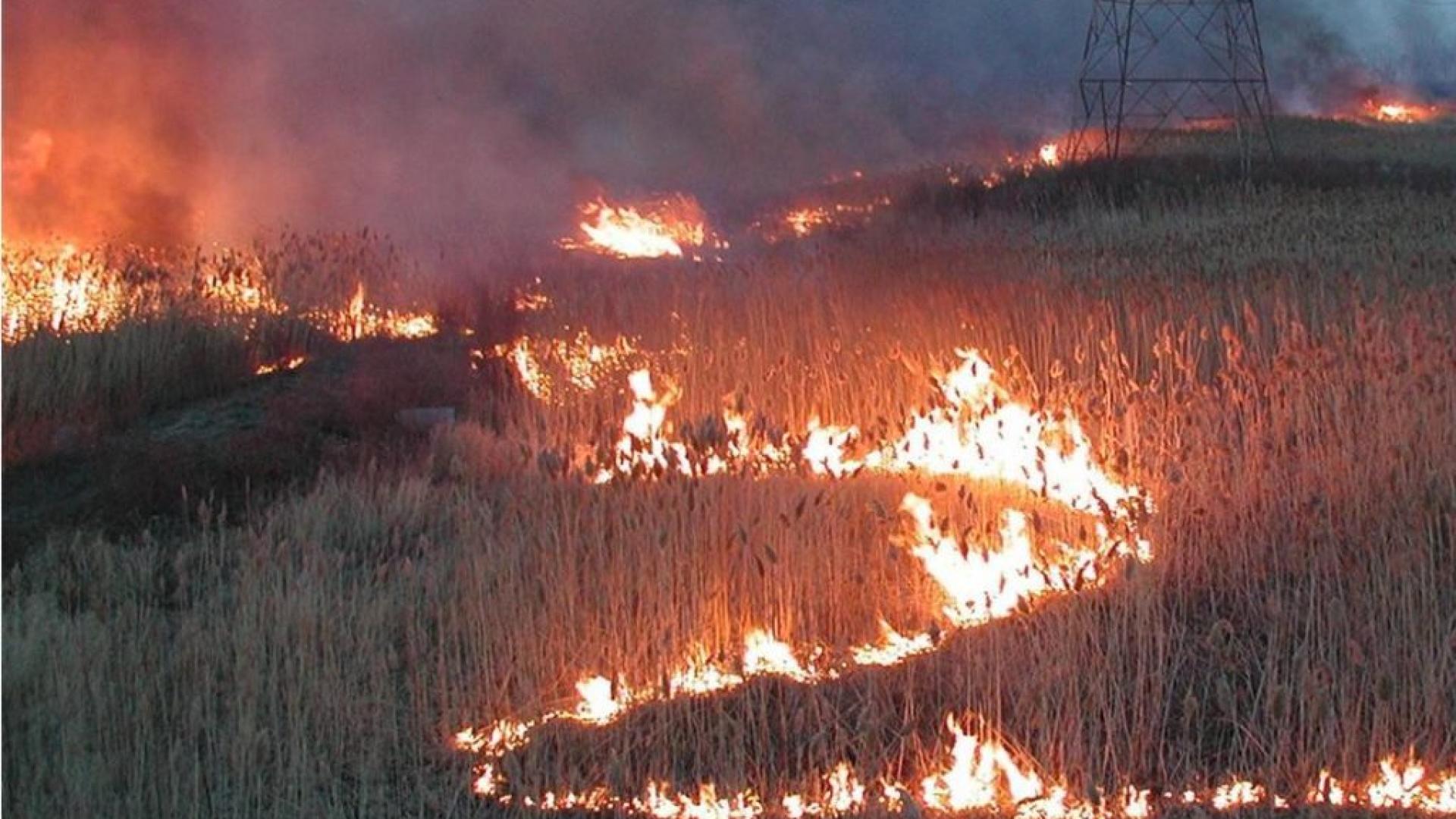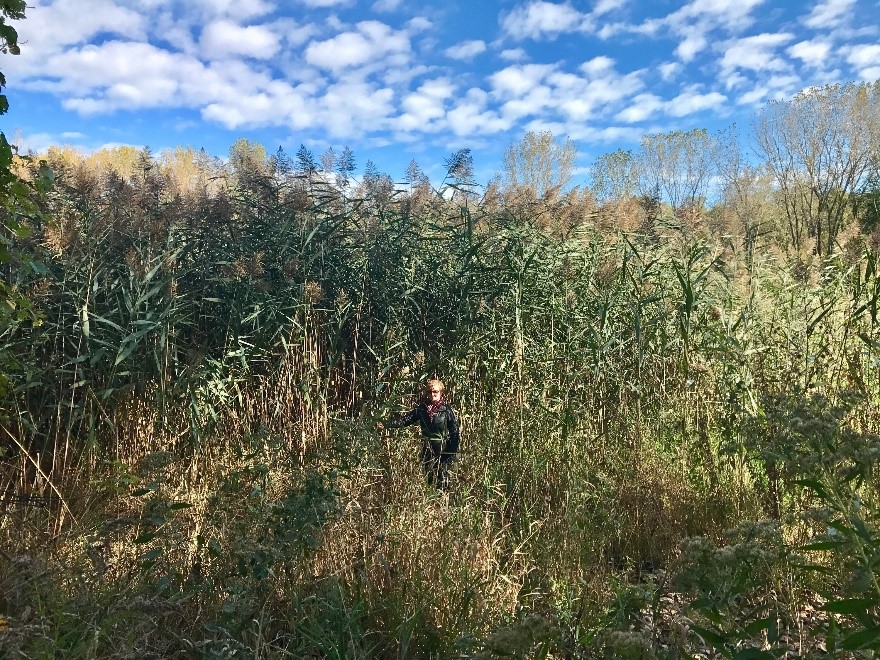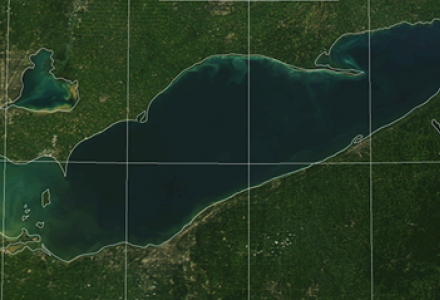
Phragmites is an invasive plant that knows no boundaries. It grows in tall stands along shorelines and other low-lying areas, crowding out native plants and animals. In response, a Great Lakes Phragmites Collaborative has sprouted in the basin to bring together Canadian and US agencies, organizations and citizen groups to share information about the best ways to snuff out the plant.
The group is now taking it a step further with a Phragmites Adaptive Management Framework to compile and analyze data on control efforts across the region. The collaborative is coordinated out of Ann Arbor, Michigan, by the Great Lakes Commission (GLC).
“There’s so much money going into Phragmites control and nobody, right now, is evaluating how effective we’re being,” said Karen Alexander, senior program specialist with GLC. “This framework is going to be set up to provide guidance for land managers based on what’s working elsewhere.”
The collaborative has been beneficial to people like Janice M. Gilbert, executive director of the Invasive Phragmites Control Centre in Ontario.
Gilbert started her nonprofit earlier this year to help people deal with Phragmites in an effective and environmentally responsible way. She said landowners and managers sometimes call a contractor first for help, which can be expensive or ineffective and result in unintended harm to native plants and wildlife.
Different Rules
Those involved with the collaborative have been learning from each other through free avenues like workshops, webinars, weekly emails on the latest Phragmites control research and case studies available on a website.
The binational aspect is especially helpful with various regulations in the two countries.
In US states around the Great Lakes, herbicides can be sprayed over water to control Phragmites. There are restrictions on that in Ontario, so Canadians use non-chemical methods such as “cutting to drown.”
“When lake levels are high, you cut the stalks below the water level to drown and stress the plants,” Gilbert explained.
While herbicides aren’t a cure-all for Phragmites, neither are methods like drowning. Without an organization like the collaborative, various groups involved in the fight might not be talking to each other on a regular basis, Gilbert said. “You’d think in this day and age it would be easy, but it’s not,” she said. “It’s really key to making this a success.”

Heather Braun, program manager at the GLC, explained that people in the US have more leeway over how herbicides can be used against Phragmites.
Herbicides can be used over water in Michigan and other Great Lakes states with approval from state agencies like the Michigan Department of Environmental Quality.
But in Ontario, herbicides aren’t approved for over-water application. There are even strict regulations for the use of herbicides on lawns.
“Herbicides are still used on farms, and Phragmites is successfully managed in drier areas using herbicides, just as in the states,” Braun said. But in wetter areas, such as wetlands, ditches and shorelines, people in Ontario have to stop spraying when they reach water.
Some companies are working with Canadian regulatory agencies to gain approval for the application of herbicides over water, and chemical methods are being tested in places like Long Point and Rondeau Bay in Ontario on Lake Erie, with monitoring by University of Waterloo Assistant Professor Rebecca C Rooney for impacts to water organisms and water quality.
“The research is going to be extremely helpful on both sides of the border,” Braun said.

History and Future
The Great Lakes Phragmites Collaborative has been around for five years. The core team includes the GLC and US Geological Survey; an advisory committee includes Gilbert, representatives from Ducks Unlimited and The Nature Conservancy and representatives from US federal agencies, state and provincial governments, and academia.
The GLC has kept the collaborative moving, focused and growing by helping members establish a common agenda, objectives and priorities.
The Phragmites Adaptive Management Framework will use a systematic approach to learn while managing, Alexander said, through the use of predictive modeling, a centralized database and standardized monitoring protocol.
“We are setting ourselves up to gather knowledge from all of the management going on in the basin and systematically analyze that,” she said. The US Geological Survey’s Great Lakes Science Center is leading the development of the framework, and the GLC is assisting. “Ultimately, what that leads us to are best management practices that are more site-specific,” Alexander said.
The framework effort is due to launch in 2018.
Phragmites management is an integrated approach, which requires more than one treatment over many years to a remove a stand. Even then, eradication is a challenge.
“There are so many options at each treatment phase,” Alexander added. “The results of those treatment regimens could be very different or they could be similar. But we don’t know that until we put some monitoring to it and collect details and compare and analyze over time.”
To get involved or find out more about the collaborative, subscribe to a Listserv and follow the collaborative’s social media accounts on Facebook and Twitter.

Jeff Kart is executive editor of the Shared Waters IJC newsletter and a contractor to the US Section of the International Joint Commission in Washington, D.C.




